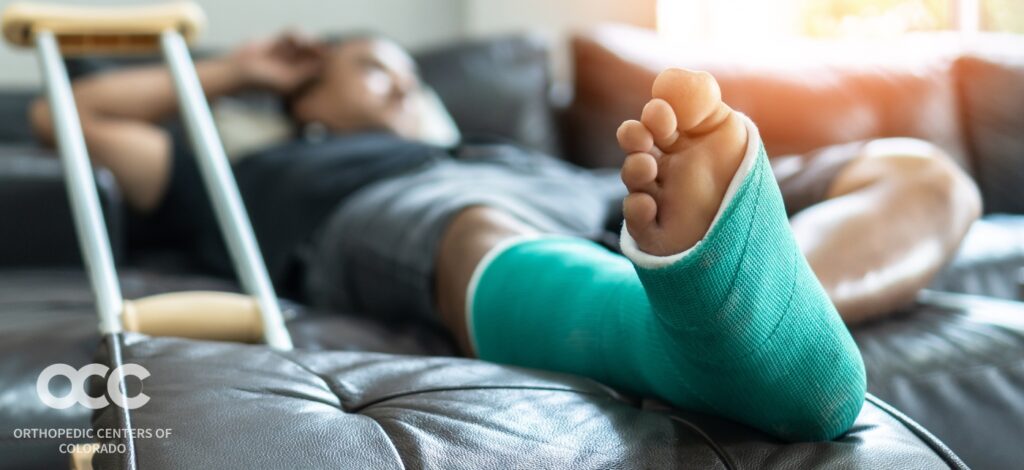Ankle fractures, though common, can be painful and debilitating if not treated promptly and correctly. Explore the different types of ankle fractures, their causes, and Dr. Keith Jacobson’s recommended treatment options for a swift and successful recovery.
Types of Fractures:
- Lateral Malleolus Fracture:
- A fracture of the fibula bone on the outer side of the ankle.
- Often caused by twisting or rolling the ankle.
- Medial Malleolus Fracture:
- A fracture of the tibia bone on the inner side of the ankle.
- Typically occurs due to direct impact or excessive force on the inner ankle.
- Posterior Malleolus Fracture:
- A fracture of the back portion of the tibia at the ankle joint.
- Often associated with high-impact injuries.
- Bimalleolar Fracture:
- Involves fractures of both the medial and lateral malleoli.
- Indicates a more severe ankle injury.
- Trimalleolar Fracture:
- Involves fractures of the medial and lateral malleoli, as well as the posterior malleolus.
- Represents a complex and serious ankle injury.
Causes of Ankle Fractures:
- Trauma or Falls: Accidents, sports injuries, or slips and falls can lead to fractures.
- Twisting or Rotational Injuries: Sudden twisting or rolling of the ankle, especially during sports activities.
- Direct Impact: A blow to the ankle from a fall or collision.
Treatment Options:
- Immobilization:
- Initially, a splint or cast is used to stabilize the ankle and prevent further damage.
- Closed Reduction:
- The bones are realigned without surgery, typically under anesthesia.
- Open Reduction Internal Fixation (ORIF):
- In cases of severe fractures, surgery may be required to realign and stabilize the bones with plates, screws, or rods.
- External Fixation:
- In complex fractures or when swelling is severe, an external frame may be used to stabilize the ankle.
- Physical Therapy:
- A crucial part of recovery, it helps restore strength, flexibility, and mobility to the ankle joint.
Recovery and Rehabilitation:
- Weight-Bearing Progression:
- Initially, non-weight bearing is advised. As healing progresses, weight-bearing is gradually introduced.
- Range of Motion Exercises:
- Gentle exercises help restore flexibility and prevent stiffness.
- Strength Training:
- Specific exercises target the muscles around the ankle to regain strength and stability.
- Gradual Return to Activity:
- Depending on the severity of the fracture, a phased approach to returning to normal activities is recommended.
Ankle fractures, though painful, can be effectively treated with proper medical attention and rehabilitation. Dr. Jacobson explains that early diagnosis and appropriate treatment methods are crucial to successful recovery. Remember, patience and consistency in following medical advice are key to a full recovery from an ankle fracture. If you suffer from an ankle fracture, schedule an appointment with Dr. Keith Jacobson.


